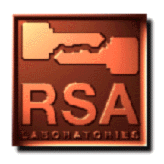

DES is the Data Encryption Standard, an encryption block cipher defined and endorsed by the U.S. government in 1977 as an official standard; the details can be found in the latest official FIPS (Federal Information Processing Standards) publication concerning DES [NIS93b]. It was originally developed at IBM. DES has been extensively studied since its publication and is the most well-known and widely used cryptosystem in the world.
DES is a symmetric cryptosystem: when used for communication, both sender and receiver must know the same secret key, which is used both to encrypt and decrypt the message. DES can also be used for single-user encryption, such as to store files on a hard disk in encrypted form. In a multi-user environment, secure key distribution may be difficult; public-key cryptography provides an ideal solution to this problem (see Question 4).
DES has a 64-bit block size (see Question 54) and uses a 56-bit key during encryption. It is a 16-round Feistel cipher (see Question 56) and was originally designed for implementation in hardware.
NIST (see Question 146) has recertified DES as an official U.S. government encryption standard every five years; DES was last recertified in 1993, by default. NIST has indicated, however, that it may not recertify DES again.